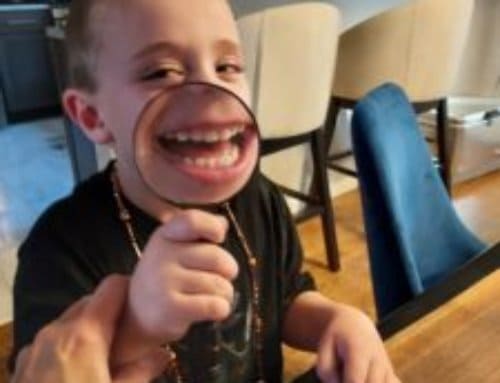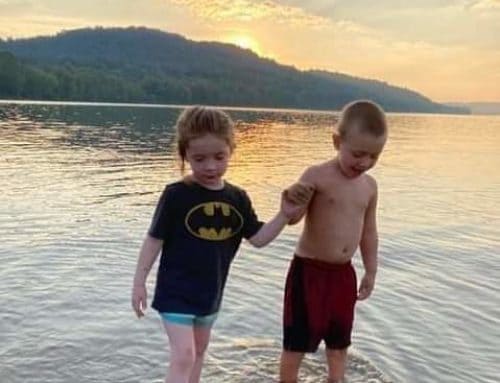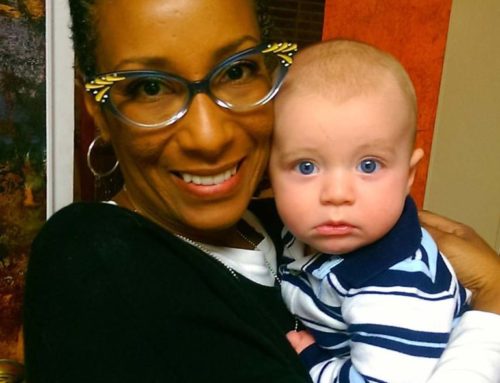I recently returned from a very powerful and moving Enneagram retreat in London designed and facilitated by Beatrice Chestnut and Uranio Paes. Upon my return I found myself reflecting on my life and journey before and after the Enneagram. Two decades ago when I first encountered the Enneagram community, I was tentative and reluctant to fully engage.
My initial introduction to the Enneagram came from browsing in book stores. I was always searching for effective ways to assist my therapy clients presenting with challenges adjusting to the university experience. I was a therapist on staff in the counseling center at the State University of New York (SUNY). My case load was heavy as I was specifically assigned (when available) to work with domestic and international students of color. While some students did present with a DSM-category Adjustment Disorder, many of the challenges could more accurately be defined and addressed as short-term culture shock, cultural differences, dysfunctional family dynamics and sometimes simple homesickness. Additionally, I had the responsibility of co-chairing the Mentorship Scholars Program. This program was designed to provide a support system for inner city students to accelerate the rate of successful outcomes and lower the rate of suspensions and dismissal. I also served as the advisor to the President of SUNY New Paltz for multicultural affairs and taught psychology and African American history classes. I had a lot on my plate and pursuing ways to effectively execute my job to the best of my ability threatened to consume me.
During this time my husband was the Brigade Surgeon for the Corp of Cadets at the U.S. Military Academy at West Point. He was the physician in charge of caring for the U.S. Army’s brightest and best. Our future military leaders’ health and well-being was in his hands. His position was one of high visibility and there were many formal and informal demands on my time as the spouse of a high-ranking military officer. This was our assignment upon our return from a 4-year tour in Germany. Did I also mention that we had 3 offspring during this season of our lives? Our oldest son was a freshman in college, our daughter was in middle school, and the baby boy was starting kindergarten. The kids were in 3 distinctly different phases of life, all of them needing not just quality time but quantity time as well.
I am an Enneagram One.
I needed all the help I could get. I just didn’t know it….
My initial formal Enneagram experience was with Riso-Hudson. I found The Enneagram Institute on line and registered for the Part 1 training in Pennsylvania. I got in my car and drove to Pennsylvania having no idea of what to expect. I just had a feeling…… and God knows I needed help just as much as the students, my family and everyone else I was busy “fixing”.
Don and Russ put me through Enneagram Boot Camp. Russ remains to this day to be a mentor and friend who has never left me without guidance and direction.
I remember being petrified during Part 1. I called home and told my husband I wasn’t sure if I had discovered something wonderful or if I had just joined a cult. My Catholic roots were being challenged in as much as if God wasn’t called God and Jesus was not mentioned …… and then there was that strange scary symbol, and where did this Enneagram thing come from?? As always, my husband’s soothing 9 comfort and reassurance came through the airwaves. “You’ll be fine. Hang in there and if you get to uncomfortable you know the way home”.
I got comfortable and curious. I returned for Psychic Structures and Part 2, then Part 3 and the Master Class for Enneagram teachers. I met and bonded with Keith Kron, Linda Roberts and Marika Borg and so many wonderful and supportive Enneagram allies along the way. I began weaving the Enneagram into all of my work. I designed amazing developmental team-building tasks utilizing the Enneagram. I reworked my diversity and inclusion training using the Enneagram. I was consulting in the Federal Government public sector, private sector, non- profits and pretty much everywhere. Eventually I hit a wall. A hard wall. My beloved Enneagram was being rejected and I was told to cease and desist in an organization that shall remain nameless. They would no longer allow me to train or teach employees using the Enneagram; however, I could “coach” the directors and department heads. Enter Ginger Lapid-Bogda.
I read everything she wrote and then went off in search of having a live experience in her coaching class. I am grateful to Ginger for all of the work that she put out in the universe that allowed me to become a better coach. Ginger also invested her personal time in me. We found a lot of common ground on which to build. Leaning in at times to Ginger’s body of work I was able to work well with the individuals I was coaching without crossing that spiritual line in the sand if it was uncomfortable or taboo from the personal or professional perspective of my client. I never compromised what I believed or what the Enneagram is to me. I simply met people where they were while using the Enneagram to help them to become better leaders. I would recommend that they choose a resource book that spoke to them and I would work with them. Some chose The Wisdom of the Enneagram, others chose Ginger’s leadership and coaching books. It was their choice. I allowed my clients to find a comfort zone that worked well for them as an entry point into understanding the Enneagram. I was delighted to see more and more resources showing up as the years passed.
I remain in awe of the way clients chose a spiritual path or focused on trying to observe their own behaviors like newborns seeing their reflections in a mirror for the first time. I met Bea Chestnut and Valerie Atkin at one of Ginger’s training classes. Val encouraged me to join Ginger’s business network and Bea Chestnut was assigned as my network mentor.
These brilliant women gave me access to tools and techniques that helped me flourish and to truly become a pioneer and revolutionary in my work to create more inclusive workplaces.
Beatrice Chestnut’s work with the subtypes remains essential and invaluable to me as I have watched people struggle with type. I will never forget a city planner who was totally checked out on the whole process until he came running up to me and Bea with her book in his hand having discovered himself at type 4. I sometimes wish I could record the reaction when a client finds themselves in one of Bea’s subtype descriptions. I am so grateful for the collegial support and the depth of diversity of the nature of the utilization of the Enneagram. Val Atkin and I seemed to have similar client challenges in different parts of the country. We talked together about ways to work with difficult situations. Deborah Ooten made sure she had my back when I started doing diversity presentations at the IEA; once again, collegial support and allies I can always call on.
When I met Diane Ring and learned about the IEQ9, once again, another resource was provided. While some of my clients liked to take the RHETI in private and slowly and carefully discuss their results, others liked the open disclosure of the IEQ9 that gave them an extensive report and a team type as they all worked together. Dirk Cloete’s contribution to this work was right on time for some CEO/Directors who had an authentic desire to understand how to move their teams forward. The lesson that they had to do the work right along with everyone else might have been a bit of a surprise; however, they are still hanging in there. It is no surprise to me that some of the more data driven clients once introduced also find a spiritual path that was not acceptable or appropriate in their workplace. They make the personal choice to go deeper and to explore why this thing called the Enneagram is making them look at their present and past experiences differently.
When I attended my first IEA conference I didn’t stay. I do not remember the year; however, I do remember how I felt. To quote Maya Angelou “You may not remember the things that people say but you will always remember how they made you feel”.
I felt like a duck out of water. I didn’t have a clique or a crew or a posse. I didn’t even have an “Enneagram BFF”. I was a stranger in a strange land. That was not the reason I left. I left because it became very apparent to me that there were different and adversarial schools of thought. My heart broke, my bubble burst and I went home and cried. You see, for me when I entered into the teachings of the Enneagram, I thought I had discovered something that would help me to show the world a true experience of “oneness.” In my idealistic and naive worldview, the Enneagram was Nirvana. The people of the Enneagram world were kind, caring humans who were all working together with a non-dualistic mindset searching for a way to elevate our consciousness. Everything wasn’t a sin. There were no denominations or “other” religions to condemn. Racism certainly did not exist. Homophobia was not part of the Enneagram world order. Love prevailed and hatred was not accepted. Admittedly I feel a little stupid writing this; however, that was what I wanted and needed to be the truth about the Enneagram community. As a black American Catholic woman, I had faced bigotry, divisiveness and duality throughout my life. If it wasn’t the color of my skin or designation of race it was my religious beliefs. If that wasn’t enough to wear me down there was also the fact that I was a woman; a woman who very often entered “teaching” a resistant monolithic male dominated population about diversity.
I was disappointed, disillusioned and exhausted. The Enneagram was my last hope and it had failed me. One of the fundamental tools that I teach in Diversity, Equity and Inclusion work is “either/or” vs. “both/and”. I was overwhelmed by the “either/or” phenomenon that existed at that time in the IEA. It was clear that there was an expectation of choosing sides. I didn’t know enough about the internal struggles to make a choice. And truthfully, I didn’t feel I should have to. So, I bailed.
Fast forward to 2019. I have watched and participated in the evolution of the Enneagram community. I have witnessed the different schools of thought come together in conversation and meaningful dialogue with one another. I have gone from feeling like a duck out of water to feeling more comfortable in or out of the water with my thoughts and opinions. I am on the Diversity team where I have seen the early stages of progress. I am hopeful; hopeful and optimistic that we will continue to move in this direction. The IEA is a community of people who engage the Enneagram in different ways; however, I now see another threat looming on the horizon. The current “either/or” appears to be the question about whether or not the Enneagram is a spiritual framework or a business/self-development tool. It is an unfortunate disconnect that seems to be gaining traction. I see this the same way that I view many of our challenges in diversity.The broad spectrum of diversity in all forms still remains a formidable challenge; especially diversity of thought and approach to challenging questions. If you have studied the Enneagram you have a heightened awareness as to how two people can look at the exact same situation and come away with very different conclusions. We may be unaware of the true definition of diversity. In simple terms diversity is all the ways that we are similar and all the ways that we are different; and the differences matter; especially the ones that you are unaware of and therefore don’t matter to you. The Enneagram is looked upon by some as an ancient spiritual roadmap rooted in the Divine…. and ……it is looked upon by some as a psychological personality type indicator far superior to anything that has been developed post the discovery of the Enneagram. There are other beliefs that people hold about the Enneagram well beyond my capacity to list. If we fall into dualistic thinking and get locked in about who is right and who is wrong, it feels to me like we are missing the point as to the value that the Enneagram brings.
This is how we exclude people. In 2016 I was in the UK at a workshop with Robert Holden and Russ Hudson. We were in that workshop the day that the Brexit vote passed. So many of the workshop participants were shocked at the results and confused about “how could this have happened?” When we do not take the time to explore, understand and respect our differences especially in communities we either leave or push people out. It may not be the intent; however, it is often the impact of not acknowledging, exploring, valuing and including differences. When I look at some of the discord in the Enneagram community it often goes back to a pattern of diversity of thoughts, ideas and approaches. The diverse nature of the people, resources and exploration of approaches to bring the Enneagram to the world in my opinion is an asset, not a liability. We can go so far as to not respect someone’s right to choose how they come to know, learn, explore and engage the Enneagram in their life. I hope that in the Enneagram community we do not lose the diversity of the avenues of the path of entry.
I love the Broadway production of “Hamilton”. I am often reminded of the lyrics sung by the character of Aaron Burr in the final act of the play, “I wasn’t wise enough to see, the world was wide enough for Hamilton and me”. I believe that the Enneagram world is wide enough beyond our comprehension. Many of my clients are now serious students of the Enneagram. They discovered the Enneagram at work, went for the deeper dive and are now on a spiritual path. Why? Because these individuals knew that for them there was more, and they wanted to unwrap this curious gift that they were given. I also have clients who are using the Enneagram to try to be better leaders and/or team members. They don’t feel the need to invest in anything more than to show up when the boss tells them we are meeting. Some of them will hang around after the session is over waiting…awkwardly, not really sure of what they want to ask. When asked I share my personal experience of the Enneagram and I recommend some resource reading. I never know exactly what the Enneagram will reveal to each individual. I do know that it is their journey and I am only a teacher and a vessel on the path that intersects with theirs for this moment in time. First, I ask the question “what is the nature of your interest in the Enneagram?” When they answer, my response is aligned with their goal and I offer some resources that they can pursue. I just add one little caveat…. “The Enneagram is a bottomless well. Be sure you take a deep dive. When you come up you will experience the breathing of air……differently.”
Deborah Threadgill Egerton






